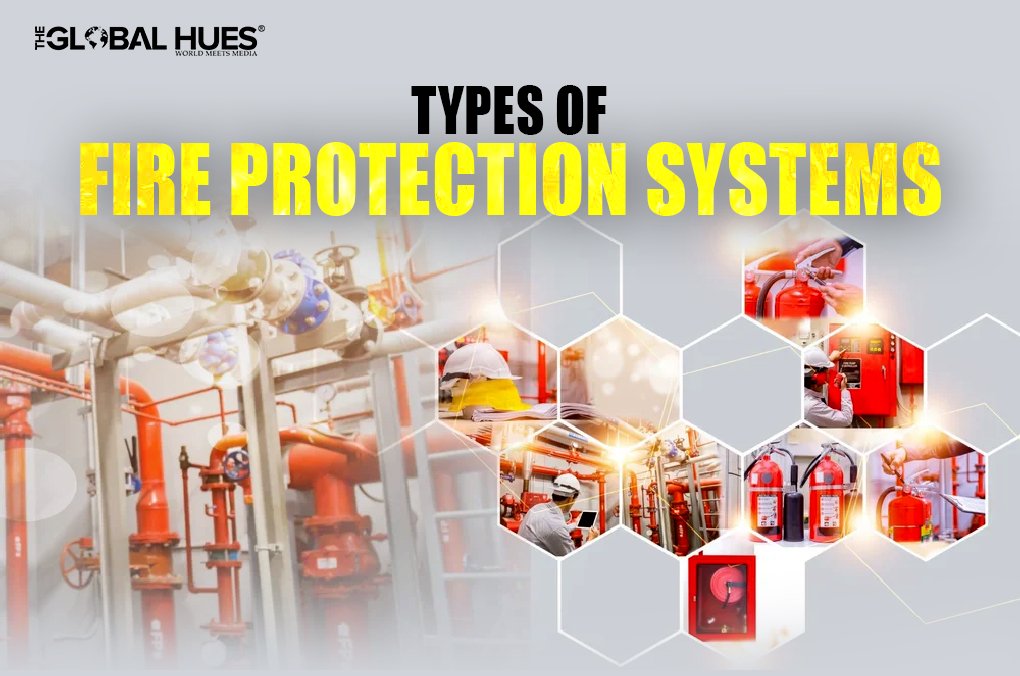Fire protection systems are essential for safeguarding lives and property from the devastating effects of fires. These systems encompass a variety of methods and technologies designed to detect, control, and extinguish fires, as well as to facilitate the safe evacuation of occupants. Comprehensive fire protection integrates both active and passive measures, ensuring a holistic approach to fire safety.
1. Passive Fire Protection Systems
Passive fire protection refers to building components designed to contain fires and prevent their spread. These measures are integrated into the building’s structure and do not require any action to function during a fire.
a) Fire-Resistant Building Materials
Materials such as fire-rated walls, floors, and doors help contain fire within a specific area. These materials can withstand high temperatures for a specified period, allowing for safe evacuation and reducing structural damage.
Reference – NBC 2016 Vol-1, Part 4 (Clause 3.3.1 & 3.3.2)
NFPA 251
b) Compartmentalization
Compartmentalization involves dividing a building into fire-resistant compartments. This design limits the spread of fire and smoke, protecting escape routes and providing more time for evacuation.
Reference – NBC 2016 Vol-1, Part 4 (Clause 4.5)
NFPA 101
c) Firestopping
Firestopping involves sealing openings and joints in walls and floors to prevent the passage of fire and smoke. This includes using fire-resistant sealants, mortars, and intumescent products that expand when exposed to heat.
Reference – NFPA 251, NFPA 70, NFPA 5000 etc.
d) Fire Dampers and Smoke Control Systems
Fire dampers are installed in ductwork to prevent the spread of fire and smoke through ventilation systems. Smoke control systems, such as smoke curtains and extraction systems, manage smoke movement, maintaining clear escape routes and aiding firefighter operations.
Reference – NBC 2016 Vol-1, Part 4 (Clause 4.6)
2. Active Fire Protection Systems
Active fire protection involves systems that require some action to operate, either manually or automatically. These systems are designed to detect, suppress, or control fires upon detection.
a) Fire Detection Systems
Fire detection systems are critical in the early stages of a fire. These systems typically include smoke detectors, heat detectors, and flame detectors.
- Smoke Detectors: These devices sense smoke particles in the air, providing early warning and allowing occupants to evacuate or address the fire before it grows.
- Heat Detectors: These are triggered by a rise in temperature. They are particularly useful in environments where smoke detectors might produce false alarms, such as kitchens.
- Flame Detectors: These detect the presence of flames through optical sensors and are often used in high-risk industrial settings.
Reference – NFPA 72
b) Fire Alarm Systems
Once a fire is detected, fire alarm systems alert occupants through audible and visual signals. Modern fire alarm systems can be integrated with building management systems to notify emergency services automatically.
Reference – NFPA 72
c) Fire Suppression Systems
Fire suppression systems aim to control and extinguish fires. Key types include:
- Sprinkler Systems: These are the most common type of fire suppression system. They automatically release water when a fire is detected. Sprinklers can be wet, dry, pre-action, or deluge systems, each suited to different environments.
- Gas Suppression Systems: These systems release gases, such as carbon dioxide or clean agents like FM-200, to extinguish fires without damaging sensitive equipment, making them ideal for data centers and laboratories.
- Foam Systems: These systems spread a layer of foam over flammable liquids to prevent ignition and suppress fires. They are used in places like airports and chemical plants.
- Water Mist Systems: These systems use fine water sprays to cool the fire and surrounding gases. They are effective in a wide range of applications, including historic buildings where water damage must be minimized.
Reference – NFPA 13, NFPA 2001, NFPA 10 & NFPA 14.
3. Integrated Fire Safety Management
Effective fire protection systems require a holistic approach that includes proper planning, installation, maintenance, and training.
a) Fire Safety Planning
Fire safety planning involves assessing risks, designing appropriate fire protection systems, and developing evacuation procedures. This plan should comply with local fire codes and standards, such as those set by the National Fire Protection Association (NFPA) or the International Building Code (IBC).
b) Installation and Maintenance
Proper installation by certified professionals ensures that fire protection systems function correctly. Regular maintenance and inspections are crucial for the reliability of these systems. This includes testing alarms, checking sprinkler heads, and servicing fire extinguishers.
c) Training and Drills
Educating occupants about fire safety protocols and conducting regular fire drills are essential for preparedness. Training should cover the use of fire extinguishers, evacuation routes, and assembly points.
4. Technological Advancements in Fire Protection
Advancements in technology continue to enhance fire protection systems, making them more efficient and reliable.
a) Smart Fire Detection
Smart detectors with advanced sensors and connectivity features can provide real-time data and integrate with building management systems for a coordinated response. These systems can differentiate between types of fires and reduce false alarms.
b) Automated Fire Suppression
Automation in fire suppression allows for quicker response times and precise targeting of fires. Innovations such as drone-based fire extinguishers and automated sprinkler systems are being explored to improve efficiency.
c) Enhanced Fire Modelling and Simulation
Advanced software tools enable detailed fire modelling and simulation, allowing engineers to predict fire behaviour and optimize fire protection designs. These tools consider various factors, including building materials, layout, and occupant behaviour.
Conclusion Note
Fire protection systems are vital components of modern building safety, combining detection, suppression, and passive measures to protect lives and property. While design any building passive fire protection system to be consider predominantly. By integrating advanced technologies and adhering to rigorous maintenance and training protocols, these systems can significantly mitigate the risks associated with fires. Continuous improvement and innovation in this field will ensure that fire protection systems remain effective and reliable in the face of evolving challenges.



